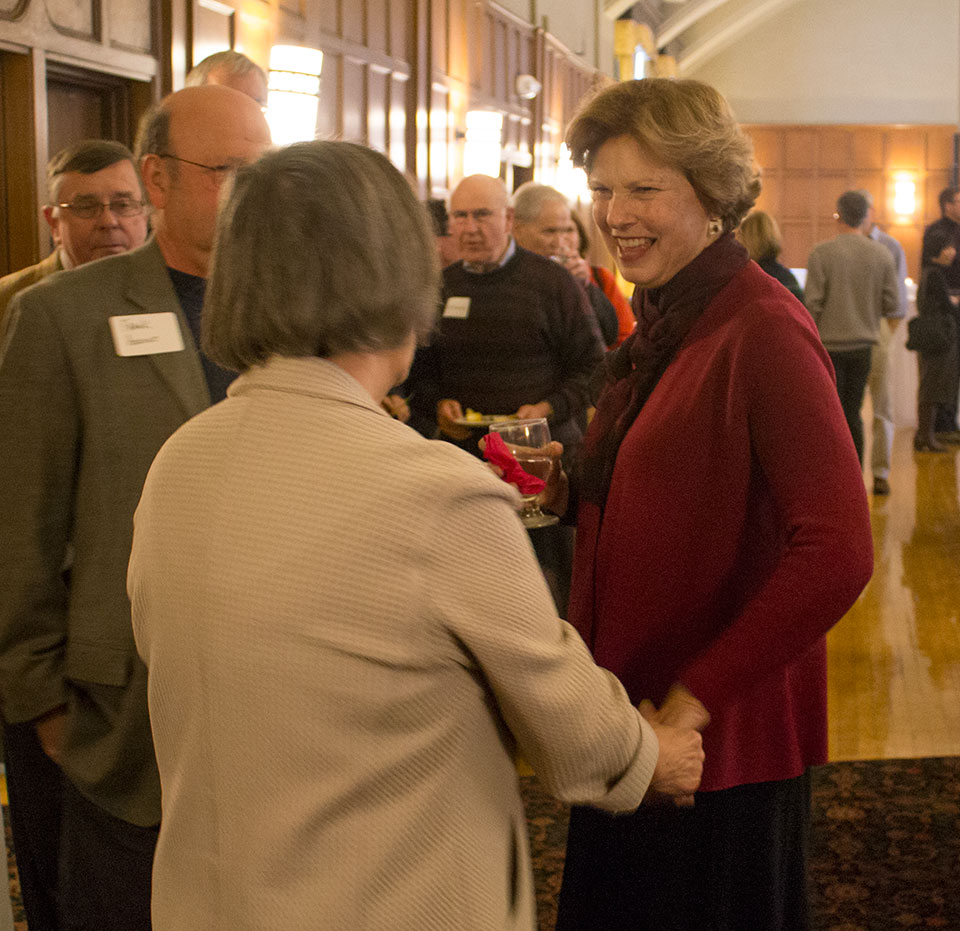Preparing Future Faculty Seminar
CRLT is accepting applications through February 24 for the May Preparing Future Faculty (PFF) Seminar, which interested graduate students can learn more about here. In this guest post, American Culture PhD candidate Mejdulene B. Shomali reflects upon her experiences in the seminar last spring.
Although I can hardly believe it, in a year’s time, I will be applying for academic jobs and preparing to defend my dissertation. When I began my graduate program in 2009, I remember thinking I would never survive my preliminary exams. When I achieved candidacy, I remember thinking the dissertation was an immaterial dream. Now, one chapter away from completing what I thought would be an impossible document, I found myself wondering how my chosen academic communities will receive me. Will I be selected for interview? Will I make campus visits? Receive offers?
While these matters are terrifyingly out of my control, my anxiety today is very different than it was at the beginning of the PhD and after achieving candidacy. Now, my worries focus on those elements truly beyond my control (the jobs available, the increasing pool of competitive applicants, and the complex decisions of selection committees). Participating in the 2013 Preparing Future Faculty (PFF) Seminar allowed me to ease into the reality of finishing my degree and gain a stronger handle on those matters that I can control: how to prepare a teaching philosophy, how to craft compelling syllabi, and how to teach more creatively and effectively.
 I would encourage anyone who feels mystified by the process of job applications and unsure of how to navigate the non-research elements of their academic career to participate in the 2014 PFF Seminar. PFF, like graduate school, is a brief but intense period of growth for students as they prepare to complete their graduate work and move on to the next phase. PFF gives participants breathing room to think in concrete ways about their future: At what kind of institution do you want to work? What kinds of classes are you prepared to teach? What strategies can you employ to navigate an academic job search and the demands of an academic career? And while it might be a scary question, PFF also provides an opportunity to ponder whether you want an academic position at all.
I would encourage anyone who feels mystified by the process of job applications and unsure of how to navigate the non-research elements of their academic career to participate in the 2014 PFF Seminar. PFF, like graduate school, is a brief but intense period of growth for students as they prepare to complete their graduate work and move on to the next phase. PFF gives participants breathing room to think in concrete ways about their future: At what kind of institution do you want to work? What kinds of classes are you prepared to teach? What strategies can you employ to navigate an academic job search and the demands of an academic career? And while it might be a scary question, PFF also provides an opportunity to ponder whether you want an academic position at all.


 Earlier this month, CRLT bid an official farewell to our long-time Executive Director Connie Cook, who has led the Center for over 20 years. On January 9, hundreds of U-M teachers and administrators gathered in the Michigan League to honor Connie and celebrate her array of impressive accomplishments at the head of CRLT.
Earlier this month, CRLT bid an official farewell to our long-time Executive Director Connie Cook, who has led the Center for over 20 years. On January 9, hundreds of U-M teachers and administrators gathered in the Michigan League to honor Connie and celebrate her array of impressive accomplishments at the head of CRLT. As winter term gets underway, many U-M instructors are teaching in new GSI-faculty teams. How can you build productive collaborations from the start?
As winter term gets underway, many U-M instructors are teaching in new GSI-faculty teams. How can you build productive collaborations from the start? 
 In the tribute read about Connie Cook at the group's annual meeting, she was lauded for her many influential publications and her generous mentorship of teaching center colleagues around the country. She was recognized in particular for her central role in "shaping the dialogue and teaching development programming on multiculturalism and diversity through her advocacy of inclusion in the work of her own Center, through a unique and wonderfully innovative theatre program with national reach, and through strong international outreach to China and other countries." She was characterized by her nominators as "a giant in our field."
In the tribute read about Connie Cook at the group's annual meeting, she was lauded for her many influential publications and her generous mentorship of teaching center colleagues around the country. She was recognized in particular for her central role in "shaping the dialogue and teaching development programming on multiculturalism and diversity through her advocacy of inclusion in the work of her own Center, through a unique and wonderfully innovative theatre program with national reach, and through strong international outreach to China and other countries." She was characterized by her nominators as "a giant in our field." At this point in the semester, many courses are building toward a midterm examination. As a teacher, how can you best design such tests to motivate and assess student learning? How can you be sure that your classroom instruction adequately prepares students for the exam? How, in short, can you make the most of exam time as a learning opportunity for your students?
At this point in the semester, many courses are building toward a midterm examination. As a teacher, how can you best design such tests to motivate and assess student learning? How can you be sure that your classroom instruction adequately prepares students for the exam? How, in short, can you make the most of exam time as a learning opportunity for your students?

